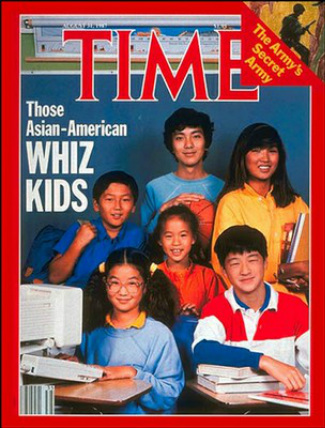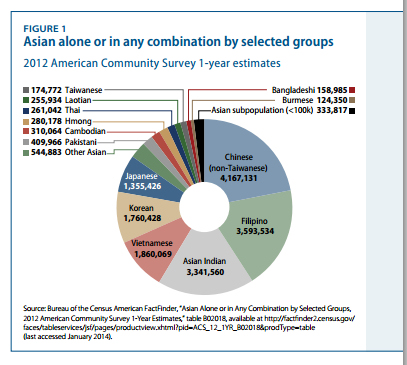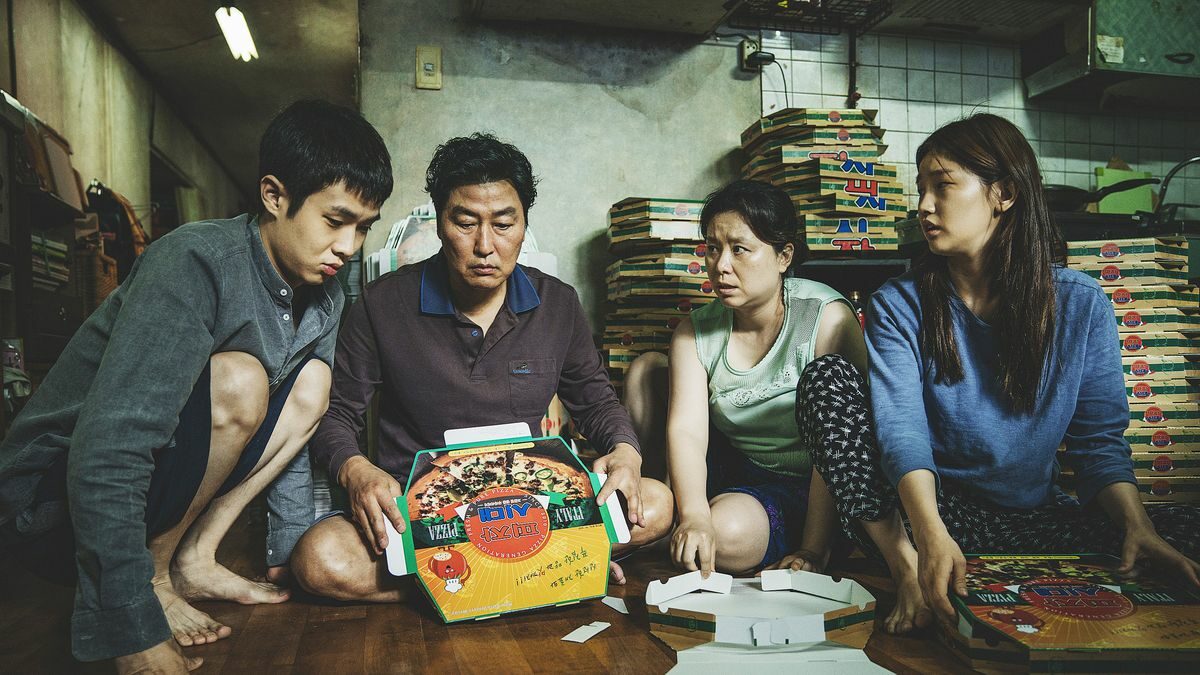
This is an awkward question, but here goes: How does a respected New York Times opinion-maker expend so many words to say so very little with accuracy about Asian Americans?
Late last week, columnist Nicholas Kristof reignited his earlier conversation on American racial inequity (collected in a series of columns tagged “When Whites Just Don’t Get It”) when he set out to explore the purported cultural underpinnings of supposed Asian American exceptionalism (“The Asian Advantage”). What resulted was an embarrassingly under-reasoned meandering through Asian American & Pacific Islander (AAPI) identity politics, one rife with the kind of Model Minority Myth generalizations and stereotypes best relegated to the set of Fox News’ The O’Reilly Factor.

Like many who undertake an impassioned defense of the Model Minority Myth, Kristof begins with an assertion of Asian American exceptionalism through citation of aggregate statistics about the AAPI community; in this case, he references US Census data showing higher overall educational attainment and median household income for AAPIs. Like many others, Kristof allows confirmation bias to guide his interpretation of these statistics as evidence of Asian American cultural fortitude – or, an Asian “special sauce”, if you will. “It’s no secret,” Kristof writes, “that Asian-Americans are disproportionately stars.”
This framing of Asian Americans as singularly exceptional is unnuanced, and thus innately faulty.
To build his mythology of the model Asian American, Kristof references the statistic that AAPI families earn nearly $20,000 more than households of other races. He forgets that interracial comparisons of median household income assume a constant household size; yet, AAPI families are on average larger than most other families due to the additional presence of one or more persons old enough to be a wage-earner. In other words, AAPI households are more likely to be multigenerational. To control for this variable, researchers are increasingly rejecting comparisons of median household income for comparisons of per capita income; this statistic reveals that there is actually no significant difference in overall AAPI median per capita income compared to Whites. Furthermore, the AAPI community is concentrated in some of the most expensive states in the country; investigators for the Center for American Progress predict that if AAPI median per capita income were adjusted for local cost-of-living (and educational attainment), it would prove to be lower than comparable White families.
Measures of per capita income further obscure well-documented challenges those same AAPI professionals face with regard to upward mobility. Evidence abounds of a so-called “bamboo ceiling”. In Silicon Valley, AAPIs make up nearly one-third of tech company workers, but a mere 14% of executives. AAPI – particularly AAPI women — researchers are underrepresented in the highest levels of science. Christopher Kang, director of the National Council of Asian Pacific Americans, points out that less than 3% of the leadership of the nation’s top for-profit and non-profit groups is AAPI. Perhaps realizing that this evidence is inconvenient to Kristof’s Model Minority thesis, he chooses instead to offhandedly dismiss the “bamboo ceiling” as a mere “perception” of AAPI professionals.
Kristof cherry-picks his statistics to show only those that might lead the casual reader to conclude that AAPI are broadly high-achieving. The omission of statistics showing how the AAPI community continues to struggle is glaring. Kristof fails to contextualize, for example, the median household income of AAPIs against our community’s alarmingly higher-than-average poverty rate – 16.1% of AAPI families live in poverty, compared to 10.4% of White families. Part of the problem is that throughout his column, Kristof treats AAPIs as a monolithically successful whole, and in so doing fails to consider the demographic diversity of the AAPI community. Notably, Kristof makes no mention of Southeast Asian Americans or Pacific Islanders whatsoever. He references the overall educational attainment of AAPIs without recognition that this number hides the wide education gap within the AAPI community; while some AAPI ethnic groups boast strong rates of higher education, for some Southeast Asian American and Pacific Islander groups, less than 15% of adults are bachelor’s degree holders. Median income is markedly lower – and poverty rate distressingly higher – for many Southeast Asian Americans and Pacific Islanders compared to the national or aggregate AAPI averages. Many of these same groups also experience profound public health disparities – anxiety, depression, and suicide rates among some Southeast Asian American groups are several times the national average, for example. Treatment of AAPIs as a monolithic aggregate renders these groups (and the stark socioeconomic disparities they endure) completely invisible.
Kristof is only partially to blame for his failure to acknowledge the achievement diversity of the AAPI community. Despite studies showing the essential value of ethnically disaggregated AAPI data to reveal intra-community disparities in socioeconomic characteristics, we continue to publish most demographic data with AAPIs misleadingly aggregated, while many state and federal departments remain reticent to collect new data in a manner that permit ethnically disaggregated post hoc analysis. Although Southeast Asian American and Pacific Islanders make up more than 15% of the AAPI community, the US Census still does not list the AAPI ethnic identifiers pertinent to these AAPIs as possible options for racial and ethnic self-identification. Just last week, California Governor Jerry Brown vetoed a bipartisan and nearly unanimous State Assembly bill to disaggregate statewide collection of demographic data for Southeast Asian American and Pacific Islander groups.

This resulting widespread ignorance of the AAPI community’s diversity reveals itself in Kristof’s most galling conclusion: Kristof suggests that supposed AAPI exceptionalism might be best explained by the AAPI community’s “Confucian emphasis on education” and work ethic. Never mind, of course, that Confucianism is a Chinese institution irrelevant to other supposedly high-achieving AAPI groups, including most South Asian Americans. Never mind, too, that several of the AAPI ethnic groups whose economic and educational indices are below the national average are also traditionally adherent to Confucianism. Never mind, finally, that the poverty rate in the strongly Confucian country of China is similar to that of the predominantly non-Confucian United States. It does not require a scientist to point out how this is a classic example of two variables that lack evidence of any meaningful relationship. Kristof’s invocation of Confucian teachings here confuses the phrases “Asian American” and “Chinese American” as synonymous, and furthermore appears based more on Orientalism than rhetorical relevance.
The attractiveness of the “Culture Canard” explanation for AAPI “success” cannot be understated; it is also woefully inaccurate. Rather, the evidence indicates that the relative achievement of some AAPI groups is best explained by structural factors. The work of Jennifer Lee and Min Zhou – which Kristof simultaneously cites and appears to profoundly misunderstand – suggest that a combination of intra-community resources and a prevailing “success frame” (itself a mixture of internalized and externalized racially-coupled expectations and stereotypes) are largely responsible. The hyper-selective influence of the United States’ post-1965 immigration policy is of particular relevance. Nearly two-thirds of AAPI are foreign-born and the majority of new immigrants arrive on work- or family-based visas. Thus, US immigration policy filters prospective immigrants for those already possessing recognized characteristics for high earning potential: intact families, higher education, sufficient economic assets to make the physical move, and/or a standing job offer. The work of economist George Borjas reveals how the entrance of these highly educated immigrants itself also creates an institutionalized “ethnic capital” – in the form of tangibles like community-specific after-school tutoring programs, as well as intangibles such as shared knowledge of how to best navigate the college application process – which in turn promotes greater economic mobility for all other members of the ethnic group.
Cultural psychology, uniquely Asian work ethic, and Confucianism, therefore, appear to have nothing to do with it; for some – but, importantly, not all – AAPIs, relative educational and economic achievement is nothing more than a byproduct of an exceptionally “choosy” federal immigration policy. Significantly, most of the AAPI ethnic groups who predominantly enter on refugee or asylum-based visas (rather than professional or familial visas) – and therefore those lacking the resources to build “ethnic capital” — are also the same ethnic groups who experience the most profound economic and educational disparities – and the least upward mobility – within the AAPI community.
Kristof concludes his column by questioning how his ruminations on Asian Americans might be relevant to “a black boy in Baltimore who is raised by a struggling single mom”. This seemingly innocuous penultimate paragraph is, in fact, Kristof’s most insidious. The AAPI Model Minority Myth that Kristof unthinkingly perpetuates has its roots not as mere anti-Asian stereotyping, but as a deliberate chastisement of the Black liberation movement of the 1960’s. The purported capacity of AAPIs to “overcome” racial disadvantage – language that Kristof himself uses half a century after the phrase “model minority” first entered the American lexicon with reference to Asian Americans – has always been intended to stand in stark contrast to the Civil Rights Movement created by those sociologist William Petersen characterized in 1966 as “problem minorities”. To once again juxtapose the Black community against the AAPI “model minority” – in the pages of the same newspaper that first published the article that would eventually germinate the Model Minority Myth from the fertilizer of anti-blackness – is galling.
In his final sentence, Nicholas Kristof implores us to “not… pretend that discrimination is history.” On this point, I could not agree more: racial stereotypes still persist. For evidence, we need look no further than the unrelenting staying power of the Model Minority Myth.
Read More:
- Response to New York Times Op-Ed: The “Asian Advantage” is a myth. Plain and simple. (NCAPA)
- Editorial: The Source of the “Asian Advantage” Isn’t Asian Values (NBC News)
- Nicholas Kristof Thinks All Asians Are Alike: The New York Times Gets The “Asian Advantage” All Wrong (Salon)
- Refuse to be Used (Jason Fong Writes)
- Nick Kristof’s distasteful reframing of the model minority as “The Asian Advantage” in the New York Times (AALDEF)
- The Truth About “The Asian Advantage” & “Model Minority Myth” (Medium)
- The Asian Disadvantage (That’s Being Ignored) (CNN)

